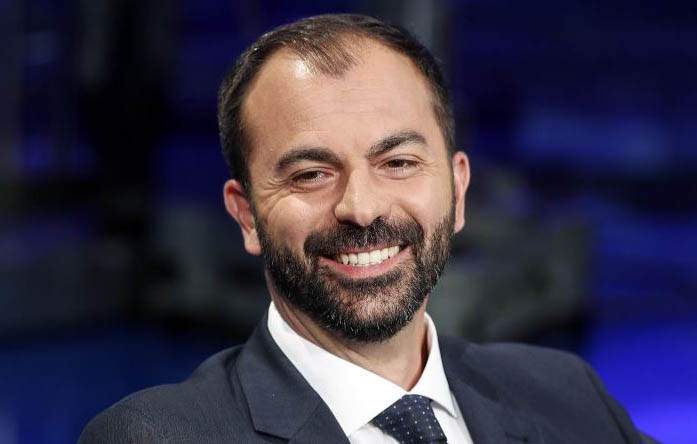Minister Fioramonti resigns: no 3 billion for schools. How much money is then in the budget?
In a letter delivered to Prime Minister Giuseppe Conte, Education, University and Research Minister Lorenzo Fioramonti resigned. “I was committed to putting education (fundamental for the survival and future of every society) back at the center of public debate,” the minister said, “stressing on every occasion how, without adequate resources, it was impossible to even plug the emergencies that plague public schools and universities.” Fioramonti, since the beginning of his tenure, had asked for three billion for schools and universities, a figure that in his view represented the buoyancy line for the Italian education system: he had first proposed the introduction of special purpose taxes to support investments (such as the tax on snacks or the tax on flights), hypotheses that were then discarded because they would not guarantee adequate resources and because they were opposed, and then he had advocated raising VAT to unlock resources to invest in education.
Having failed to see his demands met, Fioramonti therefore left office. But how much funding for schools is included in the budget? Meanwhile, expenditures are allocated (from a special fund in the MIUR budget) for the strengthening of research carried out by universities and public and private research bodies and institutes (Paragraph 240): 25 million for 2020, 200 million for 2021 and 300 million per year starting in 2022. An agency, called the National Research Agency (NRA), with statutory, organizational, technical-operational and managerial autonomy, under the supervision of the Presidency of the Council of Ministers and the Ministry of Education, Universities and Research, is also established to strengthen research.
Paragraph 258 allocates 10 million euros for interventions on school construction, with 273 one million euros per year is allocated for “a dedicated space for research infrastructures in the field of religious sciences recognized as having high strategic potential by the European Strategic Forum for Research Infrastructures” to be located in the Mezzogiorno, while an additional one million euros per year is allocated for the promotion of education on gender differences (paragraph 354).
Still, there are one million euros for the “Antonio Megalizzi” Fund for university radio stations (379), 20 million a year for grants for schools that want to subscribe to periodicals (392), 12 million euros for 2020 (and one million euros for 2021 and 2022) earmarked for measures aimed at enhancing teachers’ qualifications in school inclusion and preventing and combating bullying and cyberbullying (256), 30 million euros per year starting in 2020 for an increase in the variable part position pay and performance pay of school leaders (255), 2 million euros per year more for digital educational innovation (257), 10 million to ensure the implementation of school building interventions (258), 40 million euros for the national plan for energy efficiency interventions in public buildings used for school purposes that already have all structural safety requirements (263 and 264), 31 million euros more for 2020 for the promotion of the right to university study (265), 12.06 million euros for 2020, 54.28 million for 2021 and 49.75 from 2022 for the increase in the endowment of the staff of autonomy (266), 500 thousand euros per year from 2020 to 2022 for the International School of Advanced Studies in Trieste (268), one million euros per year for the Italian system of higher education (270), 1.135 million for teacher induction (280), 1.5 million for initiatives in favor of disabled AFAM students (282), 10 million per year more for the administrative operating fund and teaching activities of AFAM institutions (283). Paragraph 127 increases the fund for the renewal of national collective bargaining for public administration employees by 325 million euros (the increase will instead be 1.6 billion for 2021).
And again, Paragraph 59 establishes the “Kindergartens and Preschools” fund, which will be activated from 2021 with 100 million euros per year until 2023 and 200 million euros per year until 2034: it will be managed by the Ministry of the Interior and will be used to finance interventions for insecurity, renovation, upgrading or construction of buildings owned by municipalities intended for kindergartens and preschools. Then there are the grants to local authorities in Paragraph 51, which can be used for securing land at hydrogeological risk, securing and making energy efficient schools, public buildings and municipal property, as well as investments in making roads safe: 85 million for 2020, 128 for 2021, 170 for 2022 and 200 until 2034. In contrast, Paragraph 63 allocates 100 million per year for 2020 and 2021 and 250 million per year until 2034 for securing roads and extraordinary maintenance and energy efficiency of schools in provinces and metropolitan cities.
So, on balance, for the year 2020 alone, the budget law provides about 200 million for schools and universities, to which must be added the funds for the school building of municipalities and provinces and the 325 million for the renewal of salaries, part of which will go to teachers. In addition, for appropriations, the MIUR budget has an increase of about 530 million euros over the 2019 budget. Funds, however, considered insufficient by Fioramonti.
 |
| Minister Fioramonti resigns: no 3 billion for schools. How much money is then in the budget? |
Warning: the translation into English of the original Italian article was created using automatic tools. We undertake to review all articles, but we do not guarantee the total absence of inaccuracies in the translation due to the program. You can find the original by clicking on the ITA button. If you find any mistake,please contact us.





























